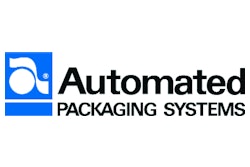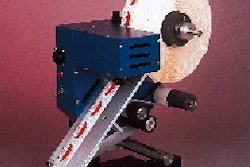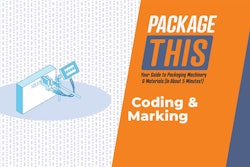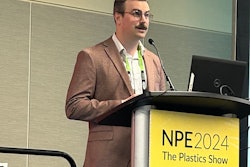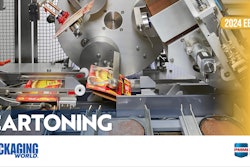In winning the filling contract from LifeScan, CP Packaging had to incorporate the pharmaceutical company's extensive quality control provisions. One of those provisions is a quality tool called Failure Mode and Effect Analysis (FMEA). It's nothing more than a prescribed procedure-using low-tech tools such as a preprinted paper chart and a typewriter-for identifying every potential failure of a process in incredible detail. In this case, the process was the operation of the filler/dropper tip inserter/capper monobloc at CP Packaging. In conducting the FMEA early on in the machine's trials, CP Packaging's engineering staff worked closely with that of APS to uncover every possible problem or error condition the machine might encounter, leaving almost nothing left to chance. Result: unforseen product and process changes are typically ferretted out up front, eliminating costly design changes after the fact. In CP's case, the resulting information was used to optimize the set-up of the machine's various parameters, including logic programming. Sandy Trimble, senior supplier quality engineer with LifeScan Systems, explains: "One of my job requirements is to complete process FMEAs with our suppliers. A process FMEA is a tool that will identify possible failures in the process before you go into production. We started the FMEA before CP Packaging had received the machine, using the technical resources from both CP Packaging and APS to complete a thorough FMEA." CP Packaging's Rick O'Connell, vp, explains how the system applies to packaging: "You put together a list of particular failures that could occur. Then you ask why could it occur, what corrective action do you have, what's the priority, etc. There are many different points that you study. This helps you determine how to consistently set the machine up and consistently produce the package that it's supposed to be yielding." O'Connell also says, "an important part of the validation of this machine was establishing FMEAs." He explains that CP Packaging and APS used the information derived from the FMEA to establish optimum settings and procedures for the machine. Those settings and procedures were then used for validation of the machine and process. The result is a reliable, repeatable process that provides a high degree of quality control. Is it worth it? Trimble thinks so. "This program has produced dramatic improvements in the quality and significant cost savings in the components LifeScan uses to build our product." At CP Packaging, Rick O'Connell found the system of value. "I think it's an interesting way to approach the analysis of a machine or a system. It's not a bad system for identifying and really analyzing what can happen with the package that would cause it to be unacceptable. It makes you ask, 'What sensor system or in-line process control should be considered for your machine to detect a potential failure?'" FMEAs were originally developed in the aerospace industry in the mid-'60s. Shortly thereafter the auto industry borrowed the concept and has used it ever since. A manual for implementing FMEAs is available from the Automotive Industry Action Group. For additional information, call AIAG at 810/358-3003.
Thinking small pays off big (sidebar)
Troubleshooting the packaging process with FMEAs
Dec 31, 1996
Companies in this article
Machinery Basics
How Can You Honor a Leader?
Induction into the Packaging & Processing Hall of Fame is the highest honor in our industry. Submit your leader to be considered for the Class of 2024 now through June 10th. New members will be inducted at PACK EXPO International in Chicago
Read More
New ebook focused on cartoning equipment
Read about the various types of cartoning equipment, how to select the right one, and common pitfalls to avoid. Plus, read equipment advice from CPGs for ultimate cartoning success.
Read More
